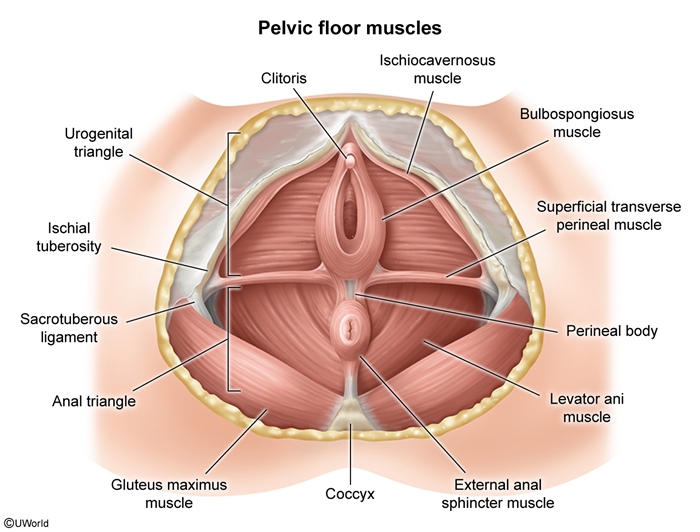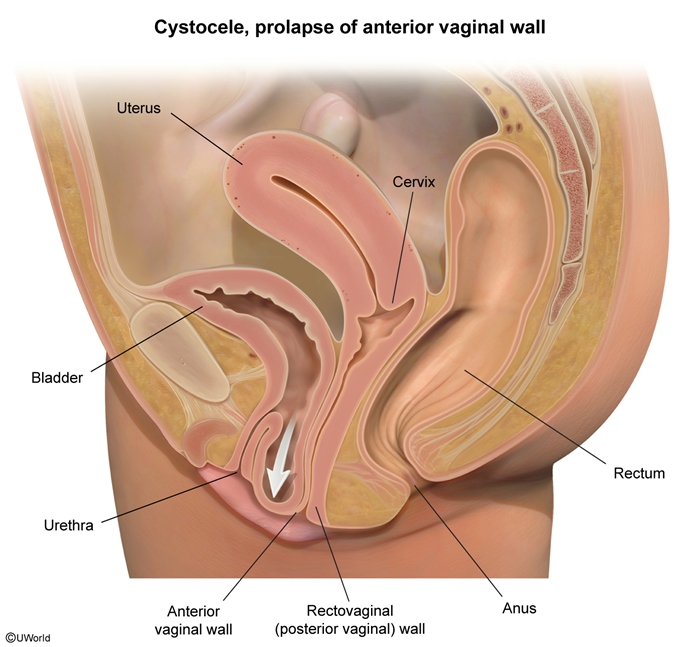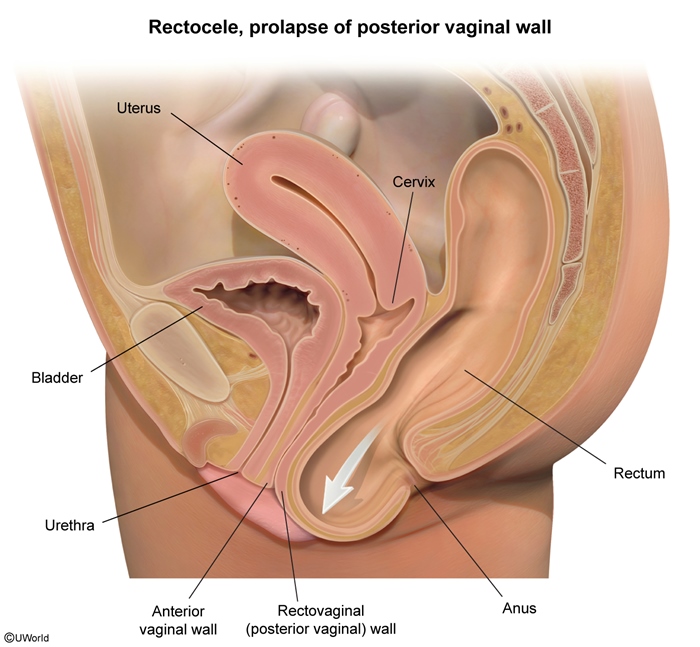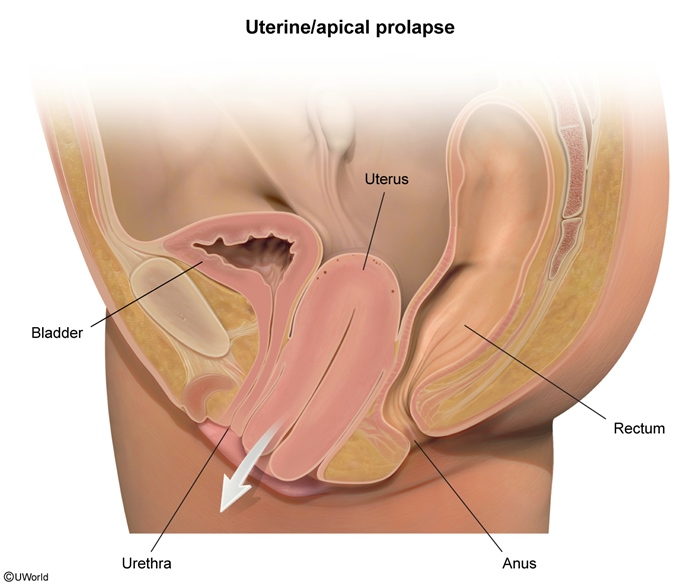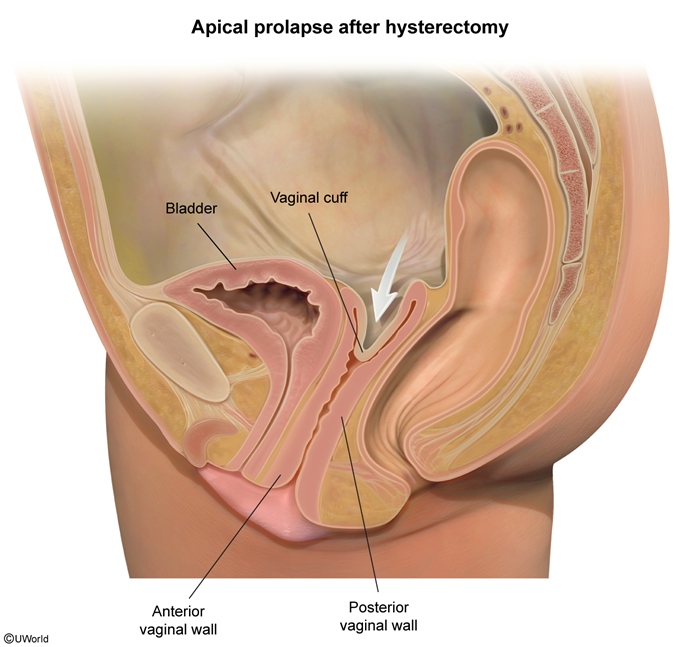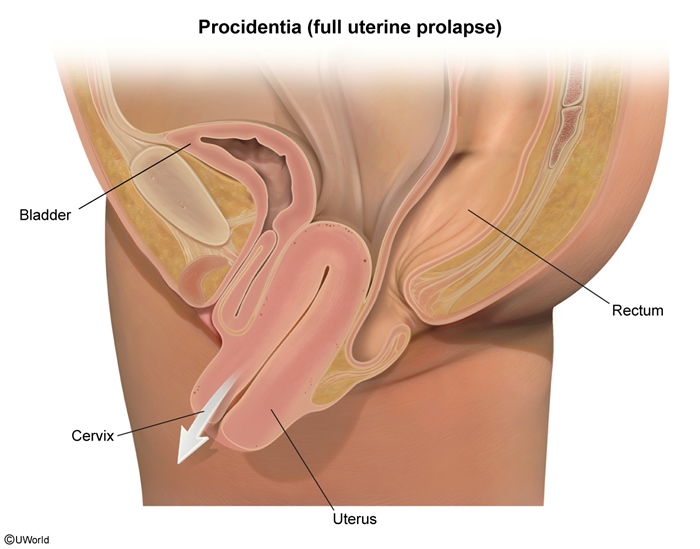Pelvic Organ Prolapse
Article Sections
Introduction
Pelvic organ prolapse (POP) refers to the descent of ≥1 pelvic organs (eg, bladder, uterus, vaginal apex, rectum) into or through the vaginal canal. POP is a common condition that typically presents with pelvic pressure along with urinary, bowel, and sexual dysfunction.
Pathophysiology
The positions of the vagina and pelvic organs are maintained by levels of muscular and connective tissue support extending from the uterus to the perineum. Superiorly, the pelvic floor muscles consist of the levator ani group (pubococcygeus, puborectalis, and iliococcygeus muscles) and the coccygeus muscle (Figure 1). These muscles create a sling for the pelvic organs (bladder, intestines, and uterus) to rest on. In addition to supporting the viscera, the pelvic floor muscles maintain continence by constricting the urethra, anus, and vagina. Inferiorly, the deep and superficial transverse perineal muscles provide additional support to the perineum and pelvic structures.
Continue Learning with UWorld
Get the full Pelvic Organ Prolapse article plus rich visuals, real-world cases, and in-depth insights from medical experts, all available through the UWorld Medical Library.
Figures
